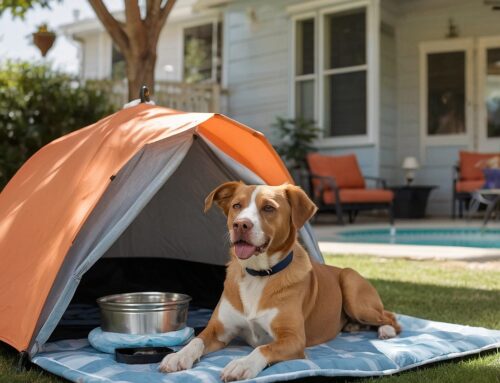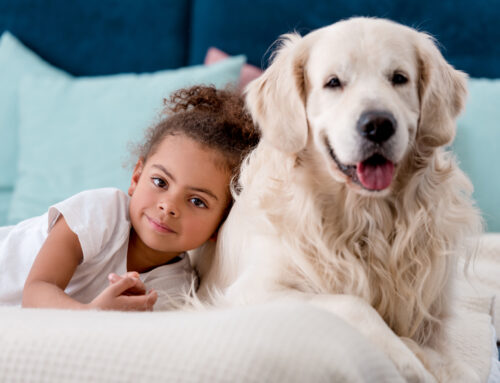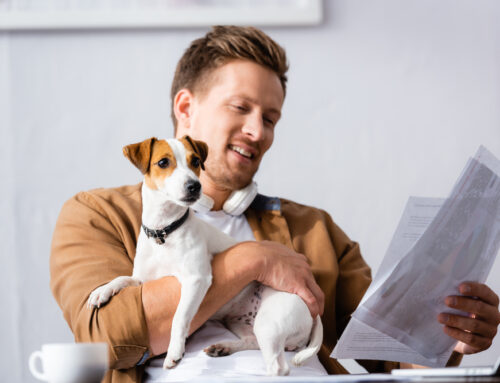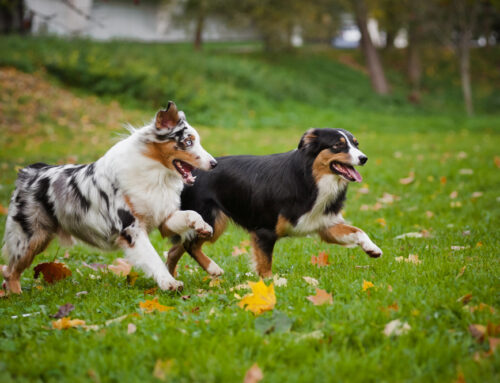It’s very common for people who are looking forward to living in a new house or residence to dread the actual process of moving itself. Between collecting supplies to move, packing, working with movers or moving everything yourself and then unpacking and putting everything in its place, a lot of work needs to be done.
When you have a canine companion, there are additional considerations for a seamless home transition.
Fortunately, however, there are some steps you can take to alleviate any stresses, at least as far as your dog is concerned. Here are just a few recommendations for those who are moving to a new home with their tail-wagging friend.
Let Your Dog See, Hear and Smell Moving Supplies
The farther in advance your pooch sees and smells moving supplies like boxes and packing tape lying around, the less apprehensive they’ll be about the big day (or days) when all the action takes place. If necessary, toss a treat or two to your pup in proximity to these items to associate them with a positive reward. You can even pack a box or two and let your dog see, hear and sniff them to get him or her used to the scent, sight and sound of the move happening.
Try to Maintain Your Dog’s Routine (to the Extent That It’s Possible to Do So)
Many dogs are very sensitive to changes in their owners’ routines, and these can make them anxious; too many changes happening too quickly can upset them. To prevent this, try and maintain your normal schedule and routine with your dog as far as walking, feeding and playing with them at the regular times in the days leading up to your move.
Make Sure Your Dog Still Gets Plenty of Exercise
Physical movement is essential to help your dog relieve their stress. As your moving day gets closer, make sure your pup is still getting regular exercise, whether it’s going for walks, playing off-leash in a dog run, swimming or all of the above. And the exercise will be a benefit for the pet parent, too.
Take Your Dog for Walks in the New Neighborhood
Acclimating your dog to their new neighborhood will go a long way toward relieving apprehensions. If it’s possible, take them for a long walk through their future environs, so they can get used to the sights, sounds and smells of this new locale in advance. Follow up by taking them on a similar walk on the day after you’ve moved to your new destination even if it’s just a short walk.
Keep Your Dog’s Mind Stimulated
Mental exercise and stimulation will go a long way toward de-stressing your dog and keeping them focused on other things besides your move. Playing with treat puzzles and interactive toys, letting them dig at a beach or lake shore or allowing them to go on an exploratory scent hunt are much more positive activities than watching them destroy sofa cushions or engage in other negative behaviors that can result from moving stresses.
Make a Safe Space for Your Dog
Safe spaces, or even long-term confinement areas for puppies or young dogs, are appropriate for helping our furry friends to feel calm and confident when lots of other things are changing around them. Safe spaces are those that include secluded and quiet resting areas, comforting toys and/or bits of your old clothing, water and calming dog pheromones (for these, try using a plug-in dog pheromone diffuser or a spritz of a pheromone spray). Set up a safe space in both the place you’re moving from and the one you’re moving to, and if possible, try to incorporate the same items in both.
Some pet parents tend to lean on dog crates a safe zone.
Get a Trusted Dog Boarding Facility for Your Moving Day
Be realistic: on your moving day or days, you’re going to be busy for almost the entire period. The last thing you need is for Fido to be underfoot — not to mention that the constant in-and-out of people and movers will be stressful and present many opportunities for your dog to dash outside unleashed. Instead, you should plan to leave your four-legged pal with reputable and licensed dog boarding facility or even a trusted friend while you take care of the details of your move.
Let Your Dog Explore Your New Home
After the biggest part of your move is done and all that’s left to do is unpack and put things away, let your dog fully explore your new abode. Consider giving them a treat in each room to encourage positive associations. Keep your energy and voice upbeat and calm, praising them for any good behavior. If your dog is hesitant in any part of the home, don’t force him or her to explore it; let them go at their own pace, and give them time to get acclimated. If any areas are off-limits, consider keeping your dog on a leash or setting up barriers to condition them to these limitations from the get-go.
Help Your Dog If He or She is Suffering from Transition Anxiety
It’s completely normal for some dogs to experience anxiety early on in their time in a new home. Some dogs can turn or revert to separation anxiety and may need “hand-holding” for the first few days or weeks in a brand-new dwelling. Don’t be afraid to comfort your dog and show them lots of love if they’re exhibiting uncertainty; it’s important for you to be comfortable and confident — not nervous or anxious — as you do this, as many dogs will look to their owners for clues on how to behave in a new place.
While not many people will say that moving is fun, moving with your dog doesn’t have to be a stressful experience if you plan ahead. Simply taking a little extra time to follow the steps above will ensure that your pup will feel calm, relaxed and happy in your new residence in no time.








